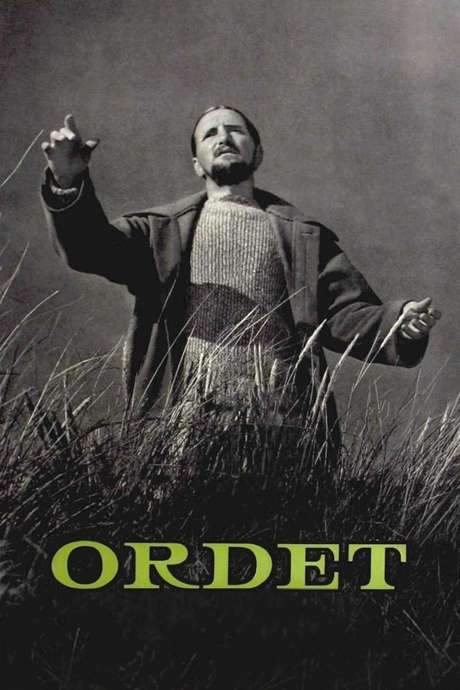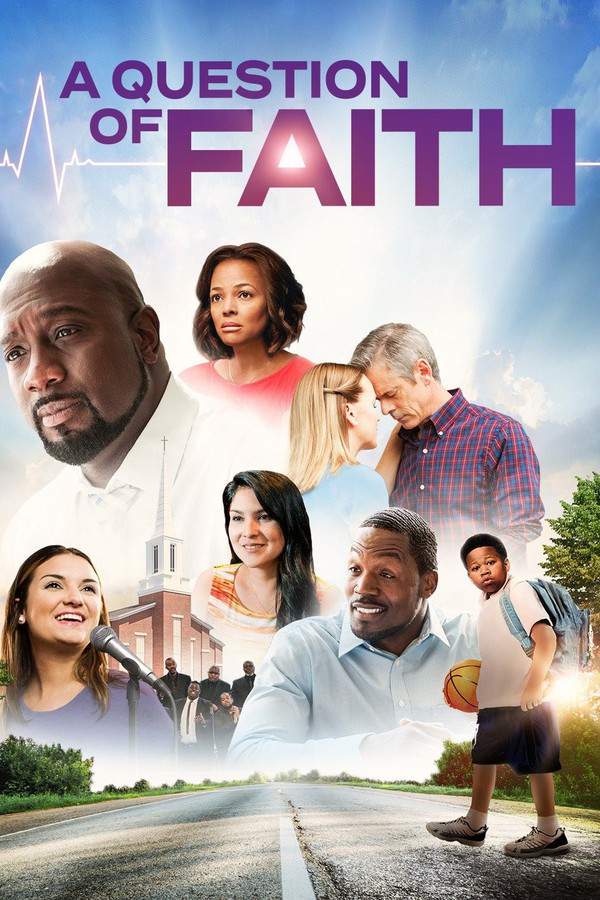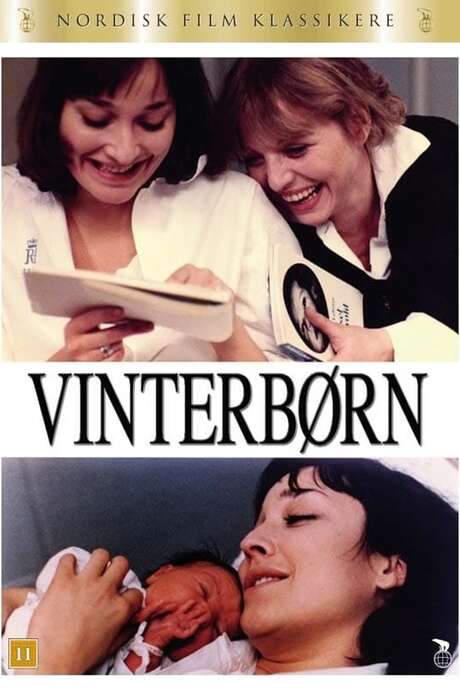
Ordet
Year: 1955
Runtime: 125 mins
Language: Danish
Director: Carl Theodor Dreyer
The three sons of devout Danish farmer Morten hold starkly different views of faith. Anders, the youngest, follows his father’s piety; Mikkel, the eldest, has abandoned belief; and Johannes, the middle child, is convinced he is Jesus Christ. When Mikkel’s wife Inger faces a dangerous childbirth, each family member’s convictions are challenged.
Warning: spoilers below!
Haven’t seen Ordet yet? This summary contains major spoilers. Bookmark the page, watch the movie, and come back for the full breakdown. If you're ready, scroll on and relive the story!
Ordet (1955) – Full Plot Summary & Ending Explained
Read the complete plot breakdown of Ordet (1955), including all key story events, major twists, and the ending explained in detail. Discover what really happened—and what it all means.
In the autumn of 1925, a tight-knit farming family known as the Borgens anchors life in a quiet corner of rural Denmark. The family revolves around the devout patriarch, Morten Henrik Malberg Borgen, a widower who remains deeply dedicated to faith, his church, and the community that leans on him. He shares the household with his three sons: Mikkel Emil Hass Christensen Borgen, the eldest who carries a quiet disbelief in dogma; Johannes Preben Lerdorff Rye Borgen, who wanders the farm after a surge of spiritual conviction inspired by Søren Kierkegaard and who claims to be Jesus Christ; and Anders Cay Kristiansen Borgen, the youngest, who is consumed by love for a young woman from the village. The farmer’s domestic world is completed by Inger Birgitte Federspiel Borgen, Morten’s wife who embodies piety and carries a growing expectancy as she nears the birth of their third child.
Anders’ heart leans toward Anne Petersen, the daughter of Peter Petersen, the village tailor. The romance curtains are half-drawn as Anders asks his father’s blessing for the union, and the family sets about persuading Peter Ejner Federspiel to approve the match. Anne is a figure of hope, but her future hinges on the acceptance of the boy she loves by her own father, who insists on conditions that test the entire clan. The path to approval grows rocky as Peter demands that Morten and Anders convert to his orthodox church before he will consent to the engagement.
In the tense negotiation that follows, the family’s old certainties clash with a churchly divide. Peter’s hard line becomes a wedge that strains old loyalties, and the insistence on theological conformity accents the rift between faiths that runs through this household. Amid the mounting tension, Inger steps forward to advocate for the match, urging her husband to soften his stance for the sake of love and harmony. Morten, torn between family, faith, and communal duty, refuses at first, but a pivotal moment arrives when he learns that Peter himself has refused the betrothal. This discovery nudges Morten toward compromise; he and Anders set out to meet Peter to negotiate the terms of the betrothal.
A crucial turn of events occurs when the village doctor arrives as Inger goes into labor. The scene unfolds with sharp, human anxieties: the doctor does what he can to save the mother, while Peter, with a stern moral posture, expresses cynical hopes that Inger’s death might trigger Morten’s conversion. The disagreement erupts into a heated clash, and Morten lashes out in anger, storming away with Anders as they race back toward home. The baby’s life hangs in the balance as the doctor’s efforts to save both mother and child unfold, though the infant does not survive, and Inger’s life is saved only by the swing of a medical intervention.
The moment of tragedy gives way to a fragile reconciliation. As the family gathers for Inger’s wake, a painful but poignant moment of reconciliation unfolds: Peter recognizes his misjudgment and seeks to repair the rift, agreeing to permit Anne and Anders to marry. Then, as if summoned by a child’s faith, Johannes interrupts the wake, approaching Inger’s coffin and declaring that miracle is possible if the family simply prays with faith. The young girl of Inger’s daughter gently pulls Johannes into a moment of childlike belief, and she asks for her mother to be raised. Johannes exhales a note of faith and prays, and the room holds its breath as Inger’s body begins to move—breathing, twitching, and showing signs of life. The sight of what seems to be a resurrection fills Morten and Peter with renewed joy, their old arguments dissolving in a shared sense of wonder. In the quiet reconciliation that follows, Mikkel finally feels the weight of faith settle within him, and Inger is rejoined with the living world.
This tale centers on a family and a village wrestling with faith, doubt, and the power of belief to knit together broken bonds. It follows a man’s struggle to balance a stern orthodoxy with a love for his family, a son’s prophetic yet destabilizing sense of vocation, and a daughter’s future that depends on her father’s openness to change. Through sorrow, confrontation, and a fragile, hopeful miracle, the Borgen family discovers that faith can both divide and heal, and that sometimes the deepest miracles lie not in a supernatural reversal alone, but in the slow, stubborn work of choosing to believe in one another again.
Last Updated: October 09, 2025 at 11:05
Unlock the Full Story of Ordet
Don't stop at just watching — explore Ordet in full detail. From the complete plot summary and scene-by-scene timeline to character breakdowns, thematic analysis, and a deep dive into the ending — every page helps you truly understand what Ordet is all about. Plus, discover what's next after the movie.
Ordet Timeline
Track the full timeline of Ordet with every major event arranged chronologically. Perfect for decoding non-linear storytelling, flashbacks, or parallel narratives with a clear scene-by-scene breakdown.

Similar Movies to Ordet
Discover movies like Ordet that share similar genres, themes, and storytelling elements. Whether you’re drawn to the atmosphere, character arcs, or plot structure, these curated recommendations will help you explore more films you’ll love.
Explore More About Movie Ordet
Ordet (1955) Scene-by-Scene Movie Timeline
Ordet (1955) Movie Characters, Themes & Settings
Ordet (1955) Spoiler-Free Summary & Key Flow
Movies Like Ordet – Similar Titles You’ll Enjoy
Son of God (2014) Spoiler-Packed Plot Recap
Do You Believe? (2015) Full Summary & Key Details
A Question of Faith (2017) Story Summary & Characters
Apostasy (2017) Plot Summary & Ending Explained
Word of God (2017) Spoiler-Packed Plot Recap
Barndommens gade (1986) Story Summary & Characters
Nøddebo præstegård (1974) Full Summary & Key Details
Winter Light (1963) Story Summary & Characters
Winterborn (1978) Spoiler-Packed Plot Recap
Sons of the Soil (1920) Full Movie Breakdown
Ordet (1943) Full Movie Breakdown
Tick Tick Boom (2009) Complete Plot Breakdown
Ditte, Child of Man (1946) Film Overview & Timeline
Norwegian Offspring (2023) Spoiler-Packed Plot Recap
The Other Side of Sunday (1996) Story Summary & Characters

















